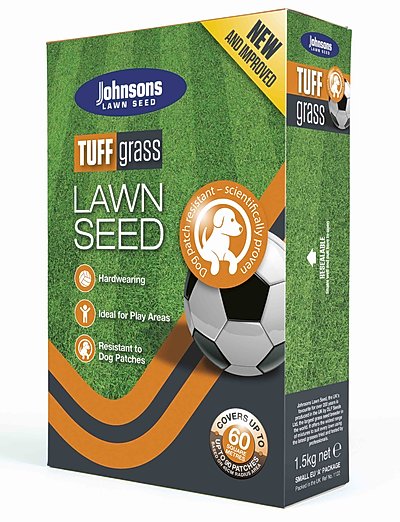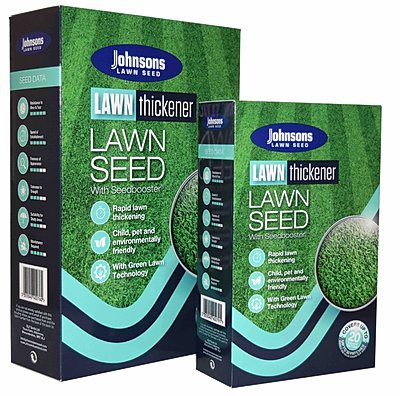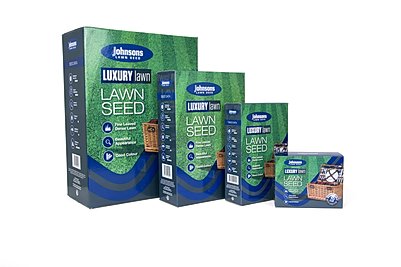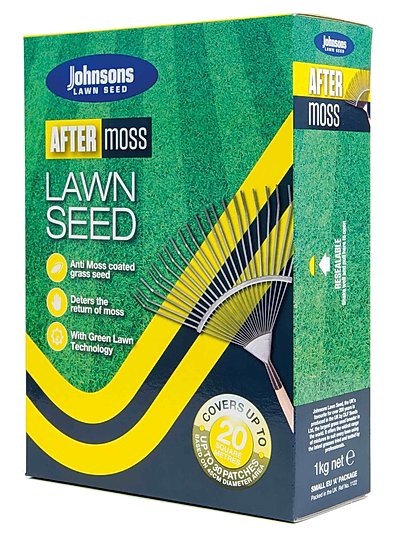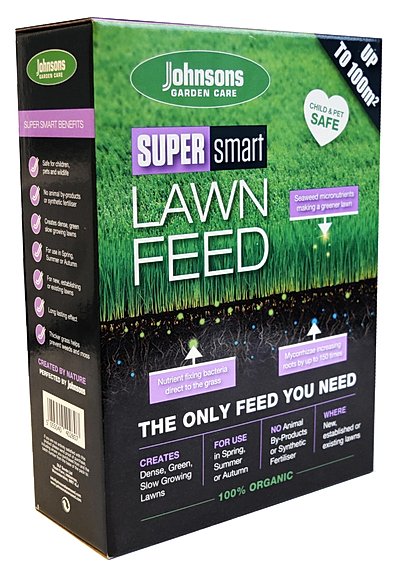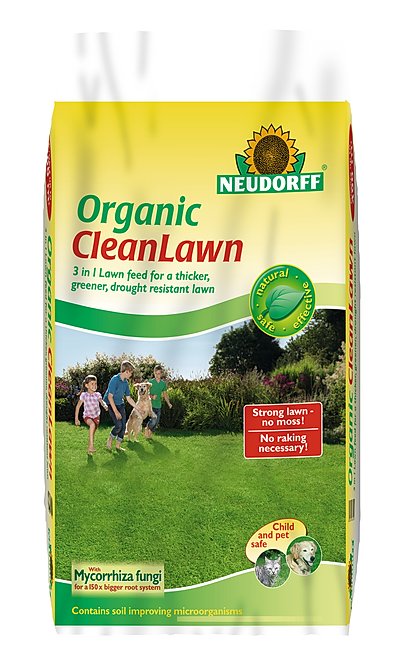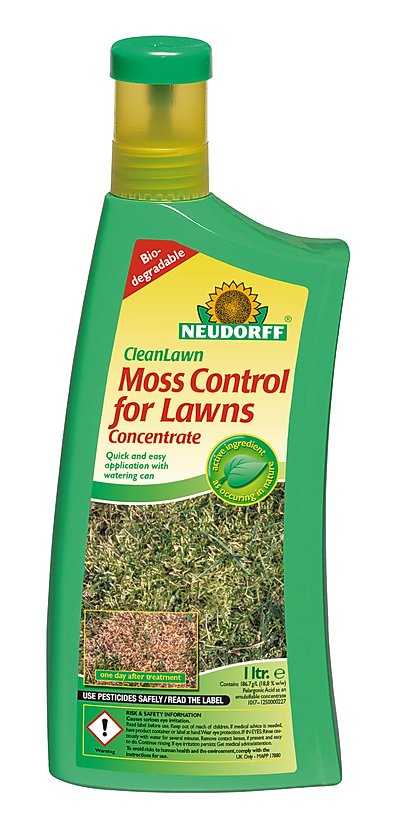March Garden Care Advice
Published:
Read Time: 5 mins
March lawn care tips from Johnsons Lawn Seed
March sees the last few weeks of winter and heralds the start of spring, meaning it’s time to start getting busy in the great outdoors for homeowners and gardeners up and down the country. The experts at Johnsons Lawn Seed are on hand with plenty of tips and advice that will help you get your outdoor space in tip-top condition for when the sun puts his hat on.
This tends to be the month when the weather starts to get warmer, but this is Britain, after all, and it can still get extremely cold in March. If a serious cold-snap hits us and your grass freezes over, make sure you don’t walk over it, as doing so you are certain to damage the tender new growth as it emerges out of hibernation.
Remove Weeds and Thatch
Provided the weather is more temperate, you are sure to notice the entire garden spring to life in March and you can be sure that the weeds will be just as keen to get ahead as your fruit and veg seedlings. It is also a certainty that your lawn grass will be in need of a serious haircut by this time so given the amount of work you’re likely to have on your plate, try to start organising things early in the month so you can get a head start.
Pull up weeds as soon as you can. There is no time like the present! The longer you leave them, the worse they will get, with roots burrowing ever-deeper and heads climbing ever-higher. It is best to pull them up by the roots if you can, to both limit their ability to reproduce and cut down on the use of potentially harmful chemical treatments.
When you do need to apply a treatment, Johnsons Lawn Seed recommends Organic CleanLawn from pioneer of natural gardening products since 1854, Neudorff. Organic CleanLawn is a three-in-one organic fertiliser which contains an indirect action against moss and weeds, as well as all the nutrition necessary for a lush green lawn. This product is also low maintenance, eliminating the need for scarifying.
You can also continue to remove thatch (dead organic matter) from lawns this month. This is an important job to stay on top of as thatch layers prevent sunlight, moisture and nutrition from penetrating to grass roots. Keep grass clear with a garden rake to give it the best chance of thriving.
Control Moss
Those jobs which didn’t get completed in February, such as clearing moss, could be a problem by now if your lawn is prone to it. Thriving on damp surfaces and managing without roots, moss is very common - potentially growing in abundance anywhere from lawn grass to high up on walls and trees - and can indicate poor grass health.
Keep moss under control with Neudorff’s CleanLawn Moss Control for Lawns Concentrate, which is biodegradable and based on the active ingredient pelargonic acid. Avoid applying lawn or moss treatments in wet conditions or if rain is due, as this will dilute the product and reduce its effectiveness.
It may take a week or two for moss to completely die, at which point you can remove it completely. Take care, though, because if you try to rake it off before it has completely died, all you will do is spread it around the garden again, especially if it is still sporing.
Start your Mowing Regime
Last but definitely not least, the odds are that you won’t be able to put off mowing the lawn this month, with grass growing as soon as the temperature rises above 6 degrees Celsius. If you followed our advice by preparing your mower earlier in the year, it should be primed and ready to go as soon as your grass needs a haircut. Ensure your mower is on the highest cutting height and take care not to cut more than a third of the grass blades in one session, or you will risk harming it.
The Johnsons Lawn Seed Portfolio
1) Tuffgrass with Dog Patch Resistance
By incorporating naturally dog urine-tolerant fine-leaved dwarf perennial ryegrass, scorched yellow patches in lawns have been consigned to history with Tuffgrass, which has excellent drought-resistance and stands up well to low temperatures and snow.
2) Quick Lawn with Accelerator-treated seed
Quick Lawn’s new formula offers rapid germination and fast establishment – all while needing just a third of the amount of water that’s usually required to get new lawns going. Gardeners benefit from a strong, thick and healthy lawn, even in cold or wet conditions.
3) Luxury Lawn Seed
Luxury Lawn is a traditional mix that’s designed to be mown close whilst retaining a lush appearance. Offering excellent drought-resistance, Luxury Lawn will thrive in shady areas too, with its dense sward giving unsightly weeds little space to establish.
4) After Moss Lawn Seed
With wet winters and drought-hit summers now common across the UK, conditions are ripe for invasions of moss. After Moss is coated in a special calcium carbonate-based shell that gently raises the pH level of the soil to help deter the return of moss. The mix incorporates Green Lawn technology for a lush, green sward any gardener will covet.
5) Lawn Thickener Lawn Seed with SeedBooster
Developed for professional turf care, each seed is wrapped in a parcel of fast and slow-release fertiliser. The result? Seeds germinate sooner and establish faster! The clever coating also harmlessly deters hungry birds from feasting on newly-sown grass seed.
6) Shady Place Lawn Seed
Offering excellent drought-resistance for one of the most challenging situations in which to nurture a lush lawn, Shady Place is ideal for semi and relatively shaded areas under trees, or next to high walls and hedges. It thrives in damp or dry shade, resulting in lawns with a fine appearance.
Find out more
To find out more about Johnsons Lawn Seed products please visit http://www.johnsonslawnseed.com/product-range.aspx
Ends
Editors notes
Established in 1820 Johnsons Lawn Seed is the oldest lawn seed brand in the UK with a long and prestigious record of product innovation and grass breeding.

